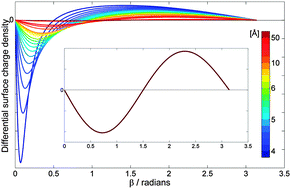There can be no doubt that fullerene research is both interesting and varied; we have created carbon nanotubes from them, we can put things inside them, they have diverse medical uses, and recently evidence has been presented suggesting that they are found in space. In this paper, Raggi et al. take a computational approach to investigate the dielectric properties of C60, the smallest of the fullerene family, and the first to be predicted and discovered.

This study has important implications for future studies into fullerenes as it demonstrates that assuming a uniform surface charge density can only be valid above a certain threshold separation from the point charge. As well as being important to the understanding of fullerene-ion collisions, this new insight could potentially lead towards an understanding of fullerene fission mechanisms.
by Victoria Parkes
Read the full details of this exciting research in PCCP:
Surface-charge distribution on a dielectric sphere due to an external point charge: examples of C60 and C240 fullerenes
Gerardo Raggi, Anthony J. Stace and Elena Bichoutskaia
DOI: 10.1039/C3CP53522C










